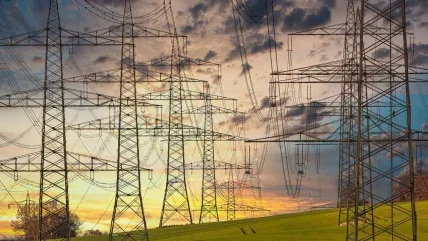
A further 80 T-pylons will be completed and energised by 2024.
The T-pylon, the first major UK pylon redesign since 1927, is around a third shorter than traditional HV pylons, with a smaller ground footprint. The new design, developed by Danish firm Bystrup, was selected from over 250 entries submitted to an international competition run in 2011, organised by the Royal Institute of British Architects and the UK government.
With a need for new energy infrastructure to enable progress towards net zero, the competition sought a new design to reduce impact on the local environment and surroundings.
The traditional lattice pylon design was the winning entry in a 1927 competition run by the Central Electricity Generating Board. It was submitted by the Milliken Brothers, a US based engineering company.
There are around 22 000 pylons stretching over more than 7700 km of HV overhead line in England and Wales.
National Grid is delivering the nationally significant Hinkley Connection infrastructure alongside its five specialist principal contractors: Balfour Beatty (400 kV overhead lines and cables); Siemens (Sandford substation); J Murphy and Sons (132 kV cables); Morrison Energy Services (Shurton overhead line entries); and Linxon (Shurton substation).
The Hinkley Connection project began construction in 2018 will be ready to connect to the new Hinkley Point C EPR nuclear power plant by the end of 2024.






